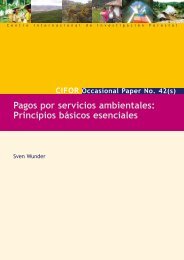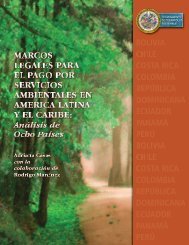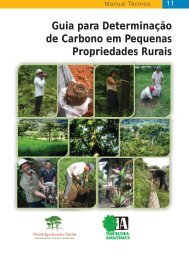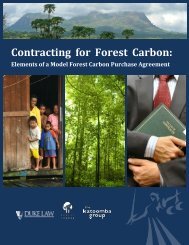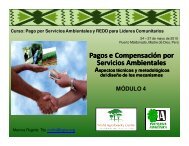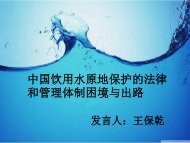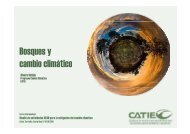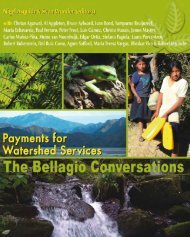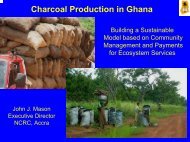Guide on Climate Change and Indigenous Peoples
Guide on Climate Change and Indigenous Peoples
Guide on Climate Change and Indigenous Peoples
- No tags were found...
You also want an ePaper? Increase the reach of your titles
YUMPU automatically turns print PDFs into web optimized ePapers that Google loves.
very low or zero crop yield. Increase of pest <strong>and</strong> diseases fromchanging temperature are affecting farmharvests. Livestock producti<strong>on</strong> would also beaffected. 2 Changing water temperature in seas<strong>and</strong> oceans impacts <strong>on</strong> the livelihood ofindigenous women living al<strong>on</strong>g coastalareas <strong>and</strong> subsisting <strong>on</strong> fishing. Rising sea levels causing saline water intrusi<strong>on</strong> into freshwatersystems would result to fishing difficulty. 3• High Health Risks. Food insecurity may force women to eat last <strong>and</strong>eat least even if they are pregnant or nursing mothers, 4 making themsusceptible to illness <strong>and</strong> diseases,with the unborn <strong>and</strong> newbornsfacing malnutriti<strong>on</strong>. The womenare also at risk of c<strong>on</strong>tractingwater-borne diseases duringfloods. Even frequent forest firescause health problems <strong>and</strong> destroyhealth services provided by theforest to them.• Loss of Traditi<strong>on</strong>al Knowledge.<strong>Indigenous</strong> women may lose theirtraditi<strong>on</strong>al ecological knowledge,practices <strong>and</strong> sustainable livelihoods with the destructi<strong>on</strong> of theirresources to climate change. The loss of traditi<strong>on</strong>al plants or medicinalplants due to droughts or floods means the reduced opportunitiesfor the coming generati<strong>on</strong>s to learn <strong>and</strong> practice traditi<strong>on</strong>al health,biodiversity c<strong>on</strong>servati<strong>on</strong> <strong>and</strong> protecti<strong>on</strong><strong>and</strong> food security knowledge, am<strong>on</strong>gMore than 50% - percentof 1.2 billi<strong>on</strong> people who d<strong>on</strong>ot have access to water arewomen <strong>and</strong> girls.6 km - the average distancewomen in Asia <strong>and</strong> Africa walkto collect water.20 kgs - the average weightof water that women in Asia <strong>and</strong>Africa carry <strong>on</strong> their heads.Source: Ob<strong>and</strong>o, A. Op cit.A Tuareg woman from Malirevealed that plants they used astraditi<strong>on</strong>al medicine are in dangerof being extinct or have alreadyvanished due to desertificati<strong>on</strong>.They also find difficulty in tanninganimal hides because the treesthey used in the tanning processhave disappeared. 5others.• Water C<strong>on</strong>flicts. Water is an essentialresource that is needed to pursuewomen’s productive <strong>and</strong> reproductivetasks. With the changing weatherpatterns affecting water availability <strong>and</strong>access, indigenous women would comeinto c<strong>on</strong>flict with other indigenouswomen over water resources.• Increasing Chores. As water becomescarce, women’s chores wouldPART VII: <strong>Indigenous</strong> Women <strong>and</strong> <strong>Climate</strong> <strong>Change</strong> 111



